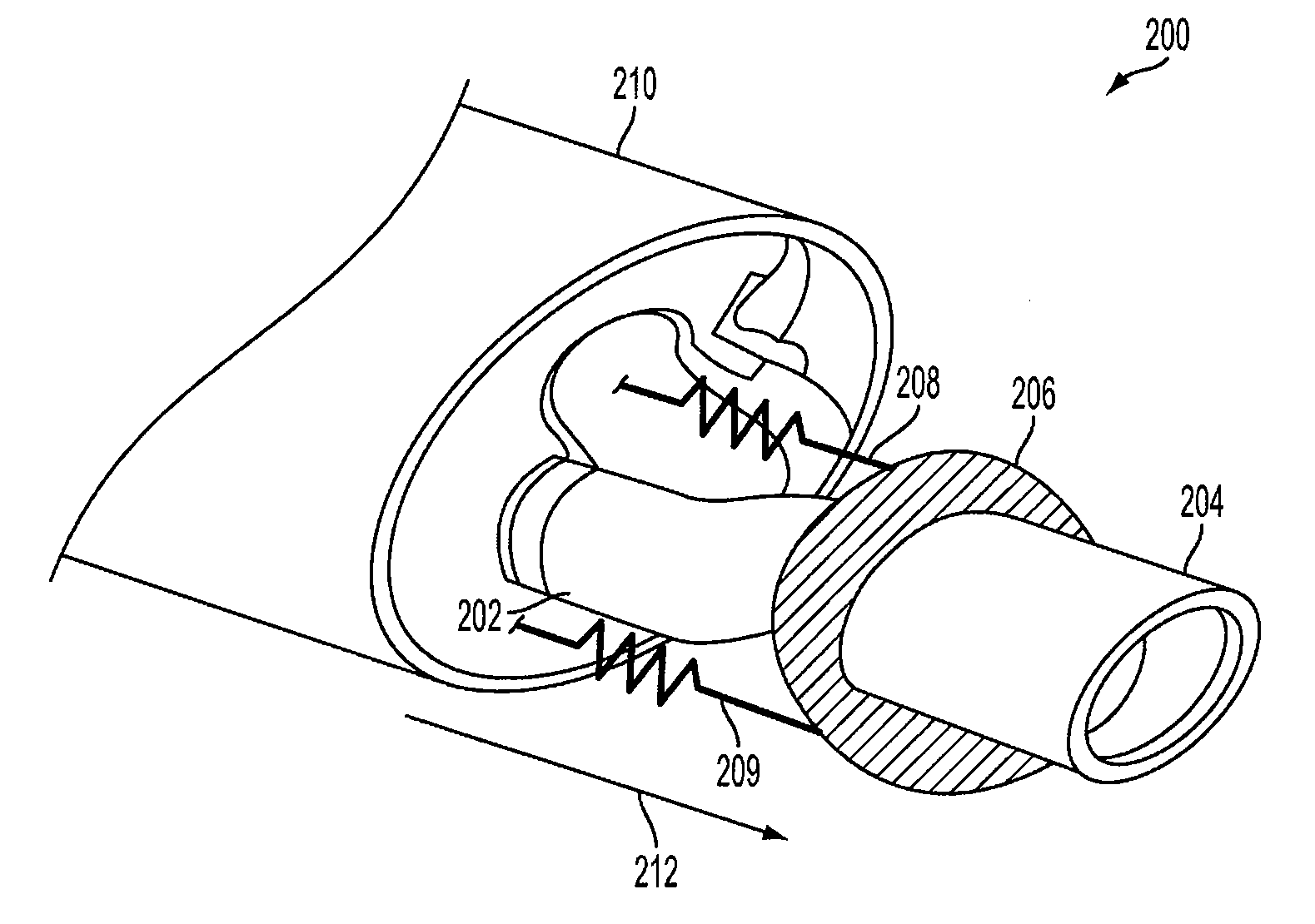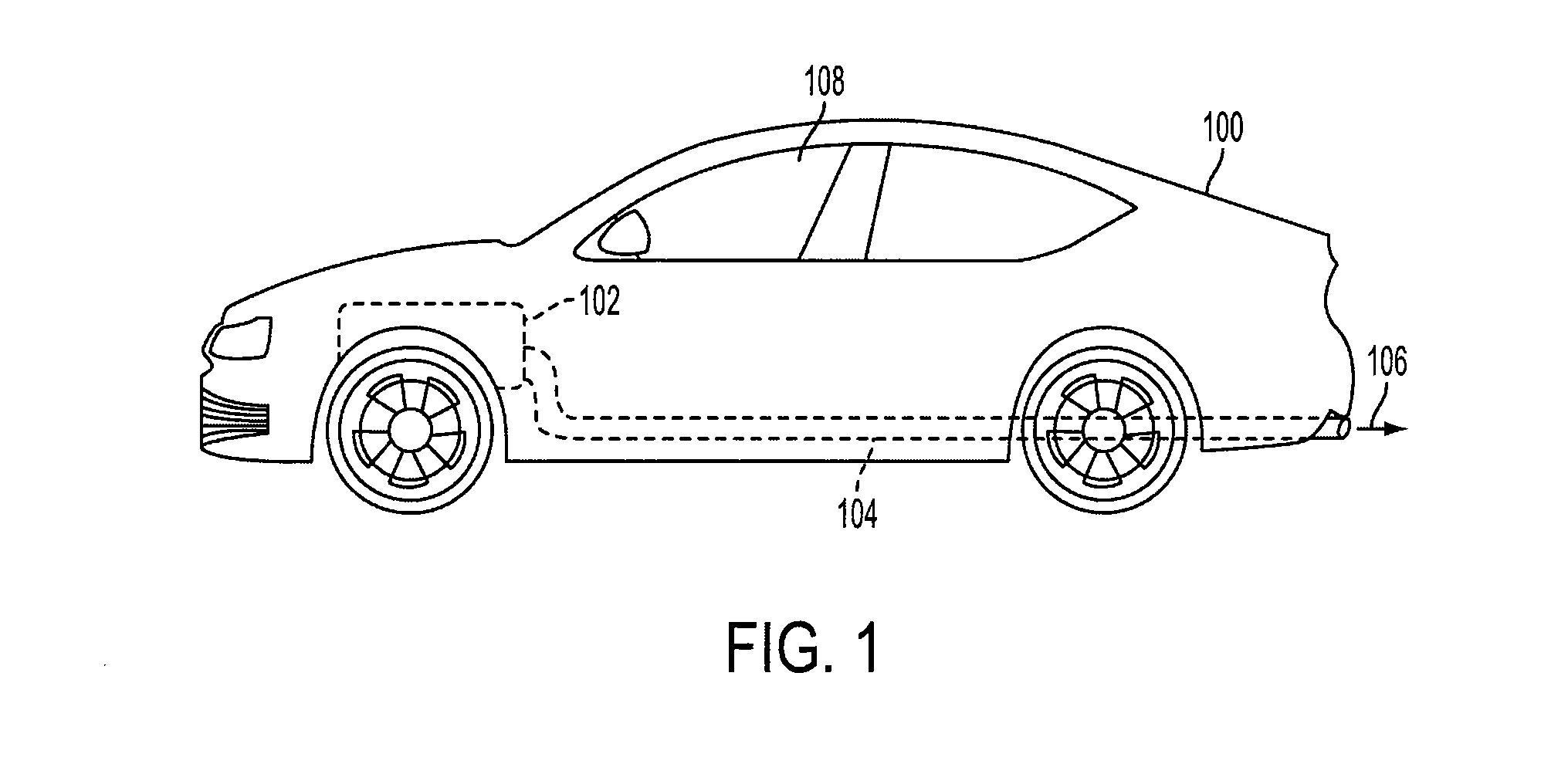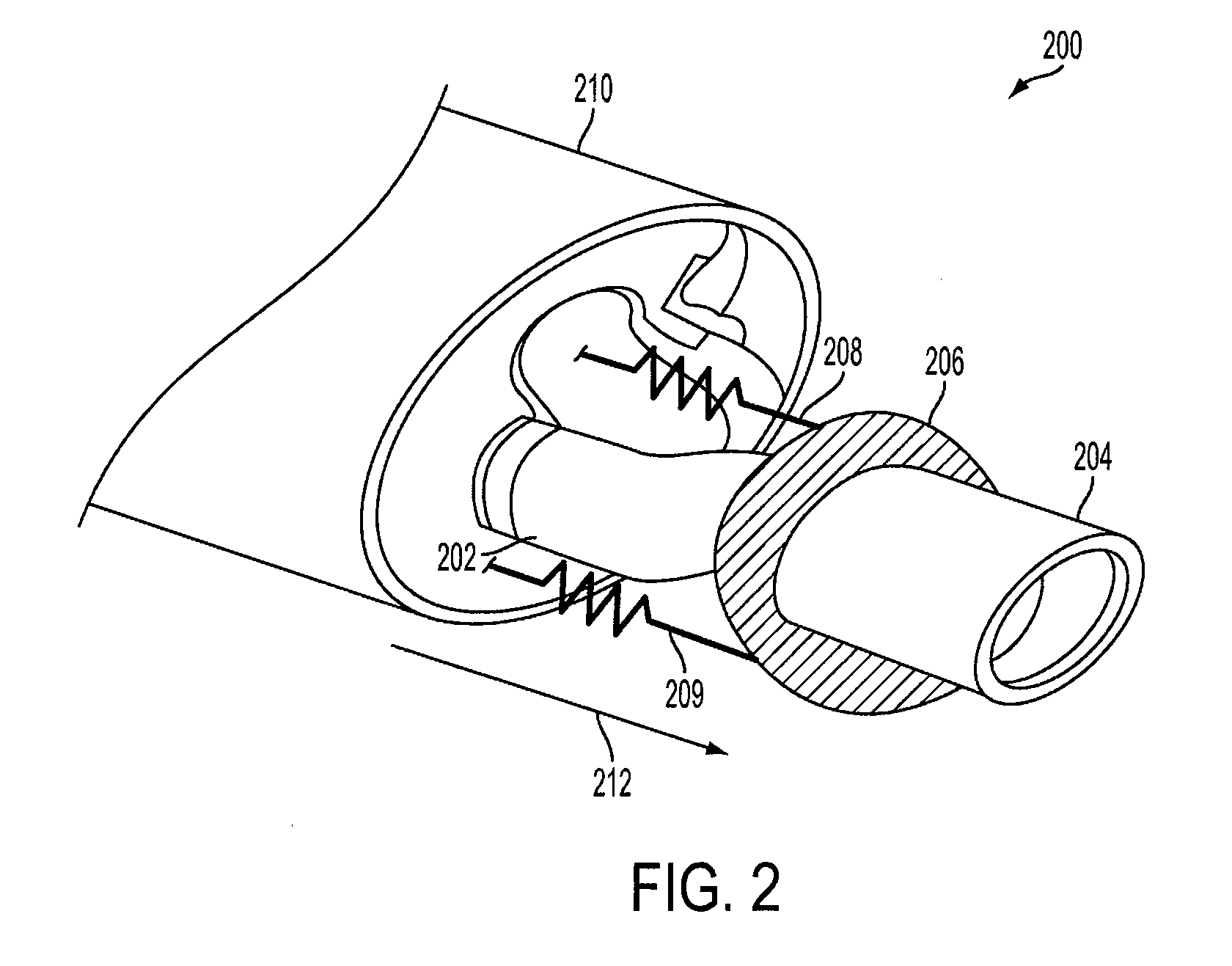Burnt gas exhaust pipe extender
- Summary
- Abstract
- Description
- Claims
- Application Information
AI Technical Summary
Benefits of technology
Problems solved by technology
Method used
Image
Examples
Embodiment Construction
[0023]Referring now to FIG. 1, an automobile 100 contains an internal combustion engine 102 connected to an exhaust system 104. The automobile 100 can be any one of a variety of vehicles with an internal combustion engine, such as motor vehicles, motorcycles, trucks, boats, dune buggies, and scooters. After combustion of oxygen and fuel occurs within the engine 102, the burnt exhaust gases flow through the exhaust system 104. The exhaust gases exit the exhaust system according to arrow 106. When the automobile 100 is stationary or slowly moving forward, environmental conditions, such as wind, will substantially dissipate the exhaust gases after they exit from the exhaust system 104 before they can enter the passenger compartment 108 of the automobile 100. When the automobile 100 is moving at a sufficient speed in the forward direction, airflow created by the moving vehicle aerodynamics causes the exhaust gases to be sucked back towards and under the vehicle due to a vacuum effect at...
PUM
 Login to View More
Login to View More Abstract
Description
Claims
Application Information
 Login to View More
Login to View More - R&D Engineer
- R&D Manager
- IP Professional
- Industry Leading Data Capabilities
- Powerful AI technology
- Patent DNA Extraction
Browse by: Latest US Patents, China's latest patents, Technical Efficacy Thesaurus, Application Domain, Technology Topic, Popular Technical Reports.
© 2024 PatSnap. All rights reserved.Legal|Privacy policy|Modern Slavery Act Transparency Statement|Sitemap|About US| Contact US: help@patsnap.com










